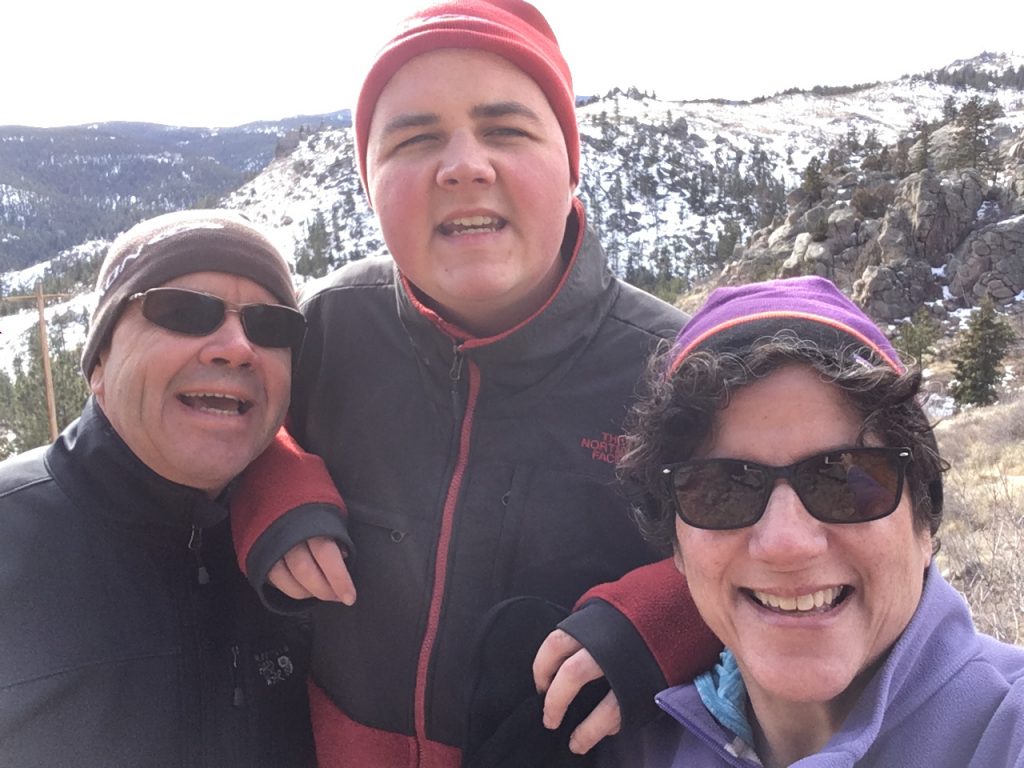It was 2009 when I first wrote in Images about hiking with my son, Mike, who has a developmental disability. He was then 10 years old.
Now he is 19, and rather than four and a half feet tall, he is six feet tall. And while faster on the trail than he used to be, Mike can still slow to a crawl while reciting lines of movies, idly touching plants, enjoying a patch of shade, or closely examining a needle from a pine tree.
One summer day as we hiked on a beautiful trail, someone stopped and asked us, “Does this trail lead anywhere?” Stumped, I said I didn’t know. I was thinking that the trail leads right to where you are.
And that is still the lesson with Mike: the walk is the destination. He can’t be rushed along from his ruminating and pausing on the trail. Mike is largely non-verbal, and while I would give anything for him to talk, his quiet companionship can be a good match for some peaceful time in the woods.
Where We Hike: Three Favorite Trails
Mike doesn’t have mobility issues, but he isn’t the most coordinated guy either. When we come across a big boulder, he looks to me for help stepping around it. Well my &# *$ pounds are no match for his 220, so we stay to trails he can cruise through.
One “go to” hike is Meyers Homestead Trail. I am always a little surprised by the slow rise in elevation, but the trail itself is smooth. Last summer we finally made it to the end. Mike was in good spirits and we enjoyed that end-of-the-hike view for the first time of many hikes on this trail.
Another “smooth” hike is the Eagle Wind Trail at Ron Stewart Preserve at Rabbit Mountain. This hike is walkable almost year-round and is just challenging enough for us.
Walden Ponds Wildlife Habitat is one of our frequent destinations. Mike’s caregivers often take him there for leisurely strolls by the water. It’s also a reliable year-round option.
Strategies: Hiking with those Who Have Developmental Disabilities
Like everyone, people with disabilities have different strengths, challenges, likes, and dislikes. So these tips certainly don’t cover all people with disabilities, but may apply across a lot of situations.
Respect limits. We can tell early on if Mike won’t be convinced to hike any real distance. Like many people with significant disabilities, his life is very much directed by other people, so we like for him to control things as is possible. With that in mind, we listen to him and head back to the car.
Communicate an end time. Mike has no sense of time. To say, “we’re going to hike for two hours” offers no usable frame of reference. So on occasion we set a timer on our phone. He will carry the phone and hike until it goes off. It’s a strategy we use at home, too. If I promise dessert in 15 minutes, he knows to bring me a timer to set.
Throw your goal out the window. Ignore your impulse to reach the summit or end of the trail. Mike truly lives in the moment, untethered by a need to hit a goal. So some days we only get out a half-mile. If his pace is extremely slow, we match his speed, even if we’d really like to see what’s around the next bend. Although, when he comes to a complete stop, we may urge him on a bit, asking him to catch up for a “high-five.”
I think these little tips work across many populations: kids, older hikers, and those who have trouble managing longer walks.
Respect limits, listen and encourage—three strategies that can help anyone on the trail.



